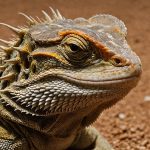Importance of Protecting Seal Pups
Seal pup conservation is essential for maintaining the balance of marine ecosystems. These young seals play a pivotal role in the food chain, serving as both predators and prey. Seal pups help control the populations of smaller marine organisms, contributing to oceanic biodiversity.
Human interaction can significantly affect the health of seal pups. Disturbances from boats, fishing activities, and pollution can lead to stress and injury. Unfortunately, these factors often result in decreased survival rates. It is crucial for individuals to respect marine wildlife and adhere to guidelines to ensure minimal impact on these vulnerable creatures.
A lire en complément : Essential Tips for UK Residents: How to Build Ideal Bat Boxes in Your Area
In the UK, several legal protections have been established to safeguard seal species. The Conservation of Seals Act 1970 prohibits the taking of seals during specific periods, allowing pups to mature without interference. The Marine (Scotland) Act 2010 and Wildlife and Countryside Act 1981 also reinforce these measures by establishing designated seal conservation zones.
By understanding the ecological significance of seal pups and the threats posed by human activities, steps can be taken towards more robust wildlife protection efforts. Continued vigilance and adherence to legal frameworks ensure these animals thrive, benefiting not only their immediate environment but the broader ecosystem as well.
A voir aussi : Integrating Wildlife Conservation in UK Housing Developments: Exploring Urban Planning Policies for a Sustainable Future
Best Practices for Interacting with Seal Pups
Engaging with seal pups requires careful attention and awareness to ensure safe wildlife interaction. Like all wild animals, seal pups are best observed from afar to minimize distress and ensure responsible behavior.
Maintaining Safe Distances
One of the key practices is to maintain a distance of at least 100 meters from seal pups. This distance is crucial, as getting too close can cause undue stress and alter their natural behavior. Observing from afar allows you to appreciate the natural beauty and behavior of these creatures without causing harm.
Recognizing Signs of Stress
It’s important to observe whether the seals exhibit any signs of distress, such as vocalizing loudly, excessive movement, or avoiding eye contact. These behaviors indicate discomfort, and if noticed, it is best to retreat to a safer distance to alleviate their anxiety and ensure responsible behavior.
Understanding Seal Behavior
Understanding seal behavior enhances your experience while ensuring safe wildlife interaction. Watch how seals interact with each other from a distance. Their natural communications and routines can be intriguing, revealing much about their social structures and habits. Observing without interference ensures that you minimize distress and contribute to their uninterrupted existence in their natural habitat.
Legal Considerations for Seal Interaction
Interacting with seals may seem charming, yet there are significant wildlife laws safeguarding these marine mammals. The Marine Mammal Protection Act is central to these protections, prohibiting activities that could harm or significantly disrupt seals. This act ensures their conservation by strictly regulating human interactions.
In the United Kingdom, additional local regulations apply, particularly pertinent to the beaches where seals reside. These guidelines often delineate safe distances to maintain from the animals and may include specific mandates to avoid feeding or touching them. Such regulations are crafted to prevent disturbances that could affect seals’ natural behaviours or ecosystems.
Violating these legal protections can lead to severe consequences. Fines or legal actions often follow if you’re found disturbing these protected creatures. Beyond legal ramifications, irresponsible interactions can endanger seal populations, compromising their health and well-being. Observing these guidelines not only respects wildlife laws but also promotes responsible interaction with our marine environments.
Understanding and adhering to these laws safeguards seals and ensures that our shared environments remain thriving and balanced. By being informed and acting responsibly, individuals contribute positively to the broader goals of wildlife conservation and environmental stewardship.
Resources and Wildlife Organizations
Discovering how we can better support wildlife is pivotal for conservation efforts. With an understanding of local wildlife rescue initiatives and access to educational resources, we can contribute to protecting vulnerable species like seals.
Local Wildlife Rescue Organizations
Numerous local wildlife rescue organizations operate tirelessly to rehabilitate animals in distress. These organizations provide crucial support, including medical care and rehabilitation, ensuring animals can be safely returned to their natural habitats. Volunteers and donations are key elements in their ongoing success. By becoming involved, you can directly aid wildlife in need.
Educational Materials on Seal Conservation
Education is a powerful tool in conservation. Key organizations involved in seal pup rehabilitation often offer educational materials to the public. They highlight the importance of reporting seal pup sightings to trained professionals immediately. Early intervention is crucial for the successful rehabilitation of seal pups, which are particularly vulnerable if separated from their mothers.
Educational programs are designed to raise public awareness about seal habitats and their ecological roles. These resources empower individuals with the knowledge required to make informed decisions when encountering stranded wildlife. By spreading awareness, we cultivate a community dedicated to protecting these animals.
Community Engagement and Support
When it comes to wildlife conservation, community involvement plays a crucial role. Participating in conservation efforts benefits not only the environment but also strengthens community bonds and raises public awareness. Individuals can contribute significantly by participating in various volunteer opportunities.
One effective way is by volunteering with local wildlife groups. These organisations often need help with hands-on tasks like habitat restoration, beach clean-ups, and monitoring seal pup health. By offering your time and skills, you support important conservation work and get unique, educational experiences that can foster a deeper understanding and appreciation for wildlife.
Additionally, engaging in community engagement activities allows you to become a voice for protecting seal pups. Educating others is equally powerful. Organising workshops, participating in community events, or simply sharing knowledge on social media platforms can increase public awareness about the crucial need to protect these vulnerable creatures. This often leads to increased interest and activism within the community, paving the way for more significant collective impact.
Whether through active participation or spreading awareness, community engagement in conservation efforts provides immense benefits. It encourages a socially responsible culture and an active sense of stewardship towards local wildlife and natural resources.











